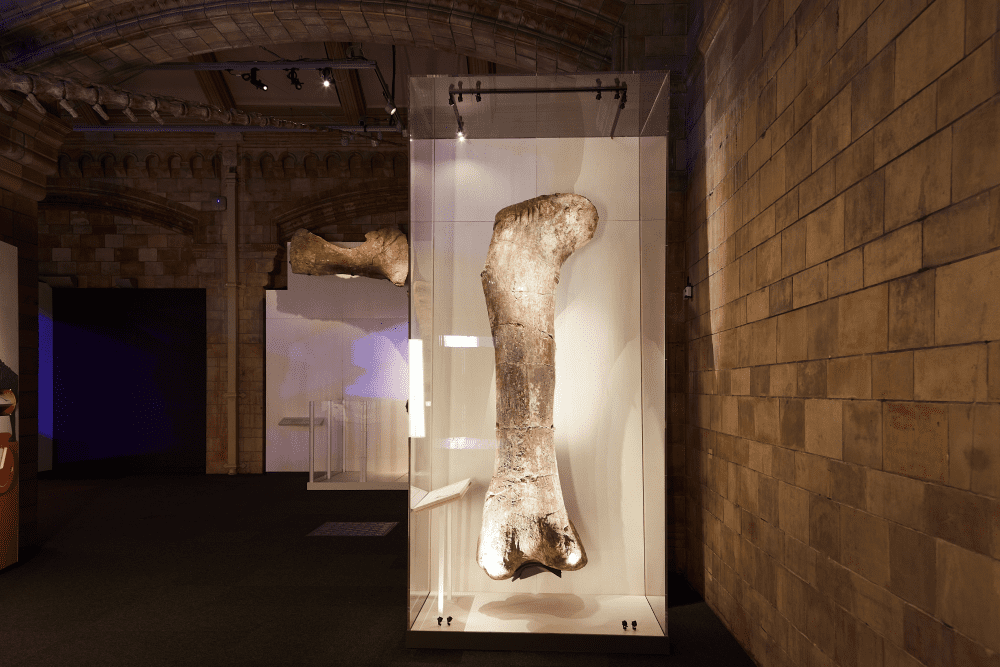One of the largest dinosaurs ever to walk the Earth was discovered by chance. In 2010, a worker at La Flecha Ranch in Patagonia, Argentina, spotted an enormous dinosaur bone poking out of the ground. Flash forward 13 years, and that pivotal dig site has given rise to the star of Titanosaur: Life As The Biggest Dinosaur, a new exhibition at the Natural History Museum London that features the most complete giant dinosaur ever found: Patagotitan mayorum.
When one of the biggest dinosaurs visits Europe for the first time, you don’t walk, you run. That’s precisely why we hot-footed down to the Natural History Museum to get a sneak peek up-close look at Patagotitan before the exhibition opens Friday, and to have an exclusive chat with dinosaur researcher and exhibition lead Dr Susie Maidment about its life.
In life, it’s estimated these creatures weighed more than nine African savannah elephants combined, which as the largest living terrestrial animals on Earth today gives you some idea of P. mayorum’s enormity.
The exhibition kicks off with some real bones discovered in Argentina, the first of which alone is about the size of a human. Titanosaur then takes you on the perilous journey juvenile titanosaurs would’ve embarked on after crawling out of their leathery football-sized eggs, facing down threats like extreme weather, predators, and starvation.

It’s a good day when you stumble across a dinosaur bone of this magnitude on your ranch. Image credit: Trustees of the NHM London
It’s a tough world out there for a little Patagotitan, but those that survive to adulthood are rewarded with a perspective of life on Earth few species could appreciate. At 37 meters (102 feet) long, we know the remains discovered that make up this skeleton weren’t yet fully grown, making it entirely possible that one day we may discover specimens that are even bigger than those we’ve found so far.
Getting so big required some extreme adaptations from these animals to overcome the oxygen and energy demands of life with one of the biggest bodies on Earth. Most air-breathing animals only absorb oxygen when they breathe in, but giants like Patagotitan were able to overcome this by evolving to absorb oxygen both as they breathed in and out, much like some bird species.

These gentle giants ate leaves and largely defended themselves by just being massive. Image credit: Trustees of the NHM London
To get enough food, Patagotitan didn’t bother much with chewing, instead opting to swallow its food whole, which with mature leaves involves a lot of long and drawn-out digestion. Fortunately, the museum has found a way to give you a unique insight into this too, as you can get hands-on in trying to aid food through replica dinosaur guts.
Titanosaur: Life As The Biggest Dinosaur is as informative as it is immersive to walk through, with beautiful illustrations and animations lining the atmospheric exhibition space as you explore the interactive elements. Above it all, there’s nothing quite like standing beneath a dinosaur that makes the world-famous Dippy the Diplodocus look small to give you some perspective, and it’s an experience we’d highly recommend.
The exhibition opens on Friday, March 31, 2023. Book your tickets now.
Source Link: Exclusive: Patagotitan, One Of Earth's Largest Dinosaurs, Has Landed In Europe For The First Time